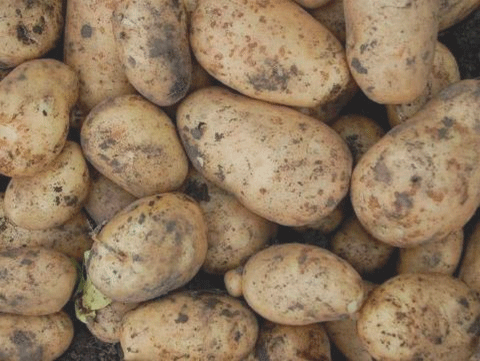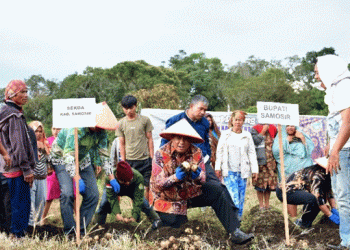In Novosibirsk, the potato harvest has been notably disappointing this year, prompting widespread concern among local farmers and gardeners. Agronomist Alexey Marmulev, a candidate of agricultural sciences, has provided an in-depth analysis of the situation, identifying key factors contributing to the poor yields.
Key Factors Affecting Potato Yields
According to Marmulev, the primary issues impacting the potato harvest are fungal diseases, particularly late blight (Phytophthora infestans), which have thrived due to this year’s unusual weather conditions. High humidity and elevated temperatures in Novosibirsk have created an environment conducive to the spread of these diseases. Late blight is notorious for causing rapid decay in potato plants, starting with the foliage and progressing to the tubers themselves.
The symptoms of late blight include dark spots on the potato tubers, which are indicative of severe infection. Marmulev emphasizes the importance of early detection and immediate harvesting of affected tubers to prevent further spread. He advises that potatoes should be stored in a dark, well-ventilated area for at least 10 days post-harvest to mitigate the risk of wet rot, a condition that can destroy up to 90% of the crop if not properly managed.
Recommendations for Farmers
- Timely Harvesting: Farmers should avoid delaying the harvest of potatoes, especially in years with high humidity and temperature fluctuations. Early harvesting can prevent the spread of fungal diseases and reduce crop losses.
- Disease Management: Implementing effective disease management practices, including crop rotation and the use of disease-resistant potato varieties, can help mitigate the impact of late blight.
- Storage Conditions: Proper storage is crucial. Potatoes should be kept in a dark, cool, and dry environment to prevent the development of wet rot and other storage-related diseases.
The challenges faced by potato farmers in Novosibirsk this year highlight the significant impact of weather conditions on crop health and yield. By understanding the causes of late blight and adhering to best practices for harvesting and storage, farmers can better manage their crops and reduce the risk of future losses. Continued research and adaptation to changing climate conditions will be essential for improving potato production in the region.








